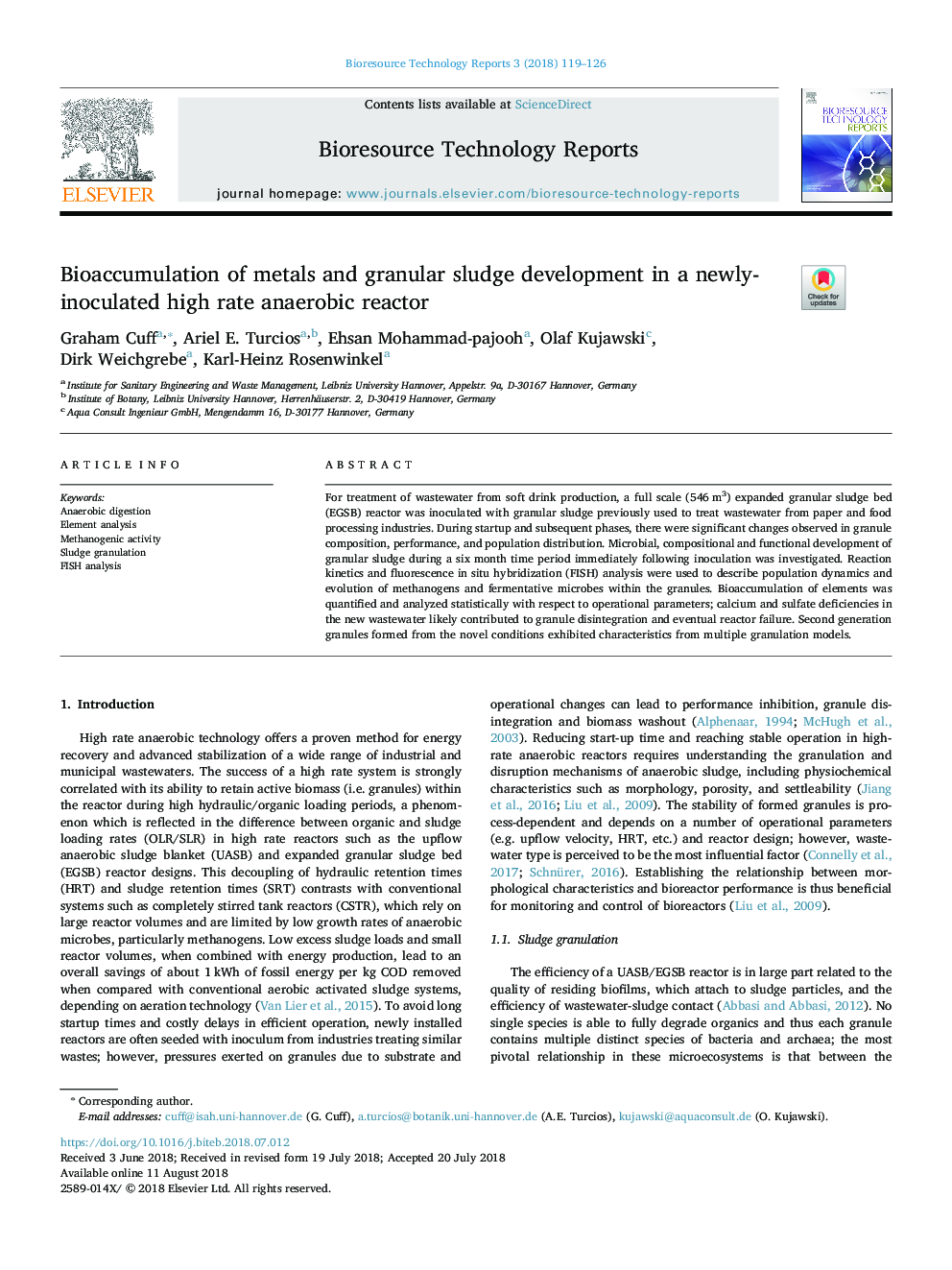| Article ID | Journal | Published Year | Pages | File Type |
|---|---|---|---|---|
| 6482537 | Bioresource Technology Reports | 2018 | 8 Pages |
Abstract
For treatment of wastewater from soft drink production, a full scale (546â¯m3) expanded granular sludge bed (EGSB) reactor was inoculated with granular sludge previously used to treat wastewater from paper and food processing industries. During startup and subsequent phases, there were significant changes observed in granule composition, performance, and population distribution. Microbial, compositional and functional development of granular sludge during a six month time period immediately following inoculation was investigated. Reaction kinetics and fluorescence in situ hybridization (FISH) analysis were used to describe population dynamics and evolution of methanogens and fermentative microbes within the granules. Bioaccumulation of elements was quantified and analyzed statistically with respect to operational parameters; calcium and sulfate deficiencies in the new wastewater likely contributed to granule disintegration and eventual reactor failure. Second generation granules formed from the novel conditions exhibited characteristics from multiple granulation models.
Related Topics
Physical Sciences and Engineering
Chemical Engineering
Bioengineering
Authors
Graham Cuff, Ariel E. Turcios, Ehsan Mohammad-pajooh, Olaf Kujawski, Dirk Weichgrebe, Karl-Heinz Rosenwinkel,
